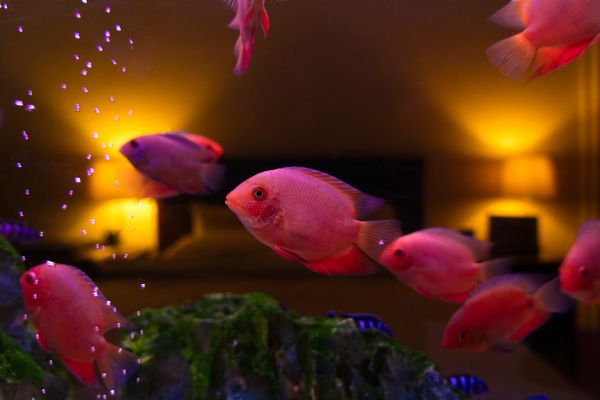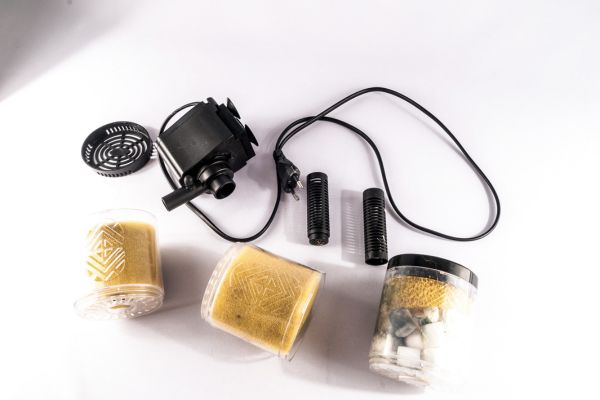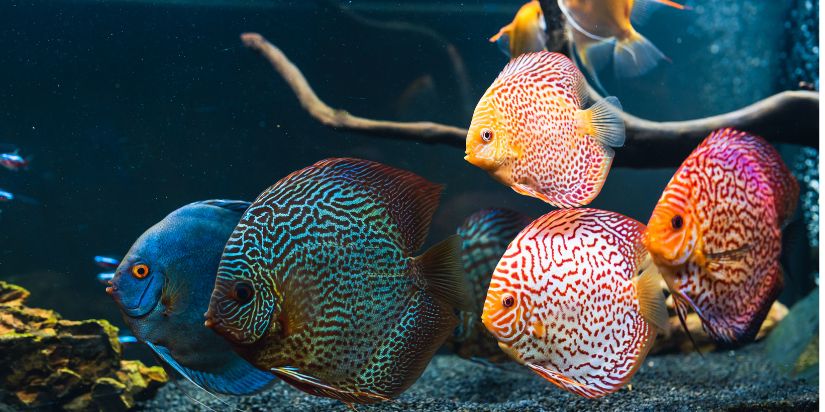So, you’re thinking about buying a customized fish tank? How exciting!
Custom-built fish tanks make peaceful, beautiful additions to most homes and provide hours of enjoyment. But if your aquarist journey has only just begun, there are many things you should consider before taking the final plunge. First and foremost, bear in mind that owning an aquarium is a hobby like any other. It requires time, money, and dedication to get the most out of it.
The first dedication you need to make? A little bit of thought and research. Careful planning and consideration will make owning your customized fish tank an absolute joy! An easy way to go about this is by answering nine essential questions.
Before answering the questions below, visit our Crystal Lake location to see the customized fish tanks created by Living Art Aquatics!
1. Do I Have a Vision for What I Want to Achieve?
There is no limit to the custom fish tank ideas you could have. The best companies can bring even the most fanciful and seemingly impossible ideas to life in beautiful, fantastical ways. However, you must first have a clear vision of what you want to achieve.
Is there a specific theme you’re looking for? Or, is there a particular spot in your home that you’d like the fish tank to be built for? Do you want unique lighting, housing or sizing? Take time to visualize the result.
Of course, you may not have a concrete vision. Instead, you may have a few ideas you’d like to combine. If so, Living Art Aquatics can help by offering professional advice, designing and planning for your new customized fish tank.
2. How Much Do Custom Fish Tanks Cost?
You have ideas or a vision, but how much do custom fish tanks cost? It’s crucial to have a set budget before embarking on this journey. When it comes to custom set-ups, the price can vary significantly based on what you want done.
But the cost might also include the fish tank essentials you need. Be sure to ask if things like the heater, filter, cabinet, etc., are included in the total purchase price. If not, you’ll need to reduce your custom design budget to account for those so your fish have everything they need to thrive.
Aquariums are long-term investments. Not only can the start-up costs be significant, but you must also budget for their consistent maintenance. If you’re not careful, it’s easy to get overwhelmed. Your customized fish tank designer may be able to give you an idea of how much ongoing maintenance will cost, barring any issues.
3. Should I Choose Freshwater or Saltwater For My Customized Fish Tank?
Saltwater and freshwater tanks differ significantly in their costs, needs and what livestock they can be stocked with. Although there are many considerations, beginners will likely do better with a freshwater tank since it requires less maintenance. However, experienced aquarists may enjoy the vast diversity of livestock available with saltwater tanks.
You can find an in-depth guide to choosing a saltwater or freshwater aquarium here if you’re unsure which is best for you.

There are many diverse livestock options for your custom fish tank aquarium.
4. What Kind of Fish Would I Like to Have?
This goes beyond saltwater vs. freshwater.
Once you’ve decided on a tank, it’s time to plan the types of fish you’ll fill it with. Remember, your customized fish tank is a delicate ecosystem; not all fish will mesh well together. For instance, some fish cannot stand cohabitating with others of their species. On the other hand, schooling fish are naturally more comfortable with larger groups.
For a harmonious aquarium, research the species you want so you can find suitable tankmates for them.
5. How Big Should My Custom Aquarium Be?
Well, that depends. If you’ve already answered the first two questions, you’re probably starting to get an idea of how big your aquarium needs to be. That said, there are some other factors to consider as well.
Generally, it’s a good idea to err on the side of larger than you think you’ll need. This gives you flexibility for your tank community to grow over time. Larger aquariums also have the benefit of containing more water to dilute toxins that might harm your fish.
But you’ll want to find a balance between the needs of your fish and the space you have available in your home or office. If you don’t have room for the massive tank you’d like, you may need to reconsider how many livestock you’ll house.
6. Where Should I Put My Customized Fish Tank?
In tandem with your budget and fish species, you should also consider where your aquarium will be placed in your home. Choose a level and sturdy spot with minimal risk of your tank being bumped into or knocked over. Equally important is that your tank be kept away from windows, vents, or anything else that might cause drastic changes in water temperature.
Windows are especially risky.
Some fish are very light-sensitive and thrive only under specific spectrums and intensities. Too much sun exposure from windows might put your fish at risk, so avoid direct sunlight.
7. What Temperature Should I Keep My Fish Tank’s Water?
All fish have fairly specific temperature requirements. Most can thrive in water heated to 75-80 degrees, but it’s essential to research the needs of your species. If you have only one type of fish, you can easily cater to their needs. If, however, you want a more diverse collection, a safe temperature range is 76-77 degrees.
Above all, keep the temperature constant. If it fluctuates too much, it can easily stress your fish and lead to illness.

Some water filtration systems come with several parts, like this one. Be sure to read the instructions for use!
8. What Kind of Water Filtration Should I Use?
If you’re a newbie, figuring out the right filtration for your tank might initially be confusing. There are lots of filters available, but the two you’ll want to stick with as a beginner are:
Canister filters
Canister filters have grown in popularity in recent times. They draw water through a lift tube to an external chamber (canister). In this chamber, the water passes through a sequence of filtration media before flowing back into the tank. They are more challenging to maintain and expensive compared to other filters, but they’re incredibly efficient.
Power filters
If you purchase a kit, these are usually the filters that come with your aquarium. They typically hang at the back of your tank and are usually the simplest (and cheapest) filters. Water is pumped through a cartridge to remove impurities before returning to the tank via a spillway.
While power filters might be cheap and easy to use, they can be inefficient. Because the water hits air during filtration, evaporation is quicker than with canister filters. So, tank water will have to be filled more regularly. Additionally, because the intake is usually directly under the spillway, much of the water drawn into the filter is clean water just returned to the tank.
Simply put, while canister filters might be more expensive and challenging, they are far superior. On the other hand, power filters are easy to use, making them perfect for new aquarists. So, starting with a power filter and graduating to a canister filter might be a good idea as you get more comfortable with your aquarium.
9. Do I Have a Reputable Company to Create Custom Fish Tanks Near Me?
When it comes to customized fish tanks, choosing the right company is nearly as important as selecting the right set-up. You need to find custom aquarium builders you can trust so you feel confident you’re receiving a high-quality, efficient tank. More importantly, look for guarantees that your tank will support a thriving livestock population and not simply look cool.
At Living Art Aquatics, we’ve been designing, building and maintaining custom fish tanks since 1996. We provide a complete aquarium solution that goes well beyond building your dream tank and includes custom cabinetry, ongoing maintenance and a wealth of relevant resources.
We’re passionate about what we do, and we encourage you to call and discuss your vision with us. Nothing makes us happier than bringing our customers’ aquarium visions to life!
Ready for a Customized Fish Tank near Crystal Lake, IL?
Customized fish tanks require a lot of research before you fully commit to them. Covering all your bases is crucial if you want to be a responsible aquarist. But answering the questions above will help you start this journey with your right foot forward!
Do you still have lingering questions? Are you ready to get started with a customized fish tank from a reputable company near Crystal Lake, IL? Don’t hesitate to give us a call!







